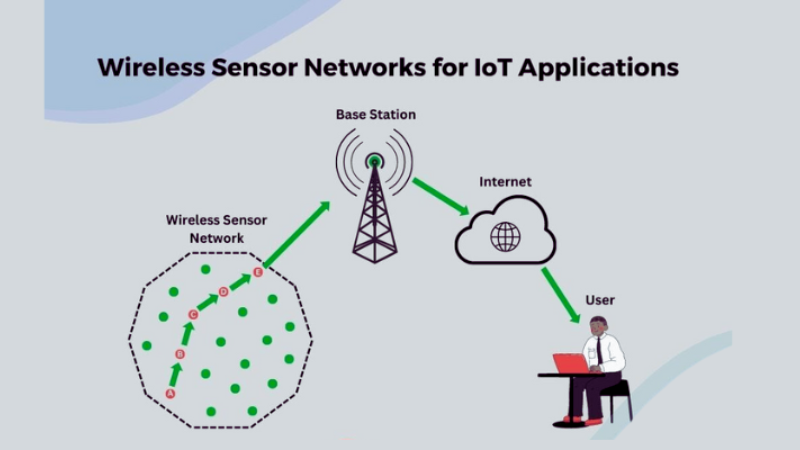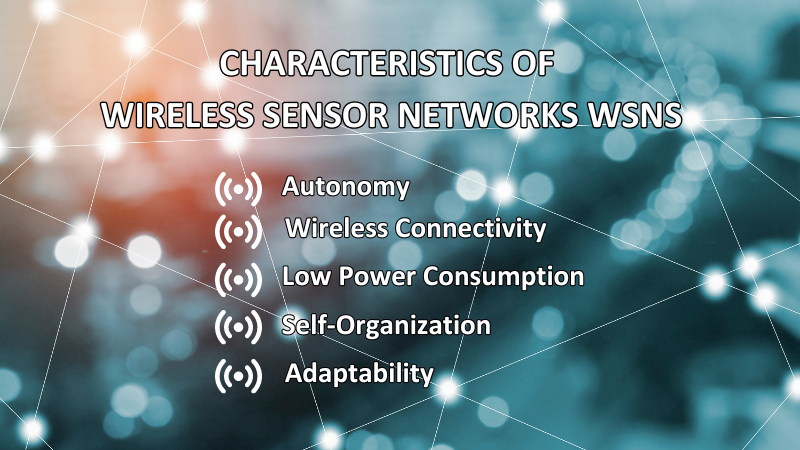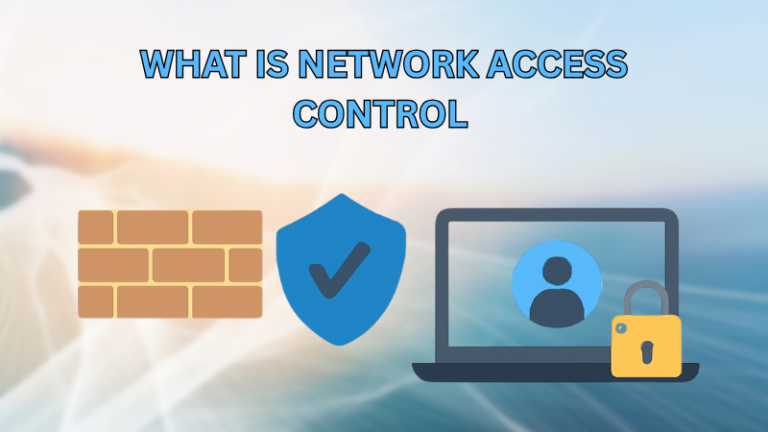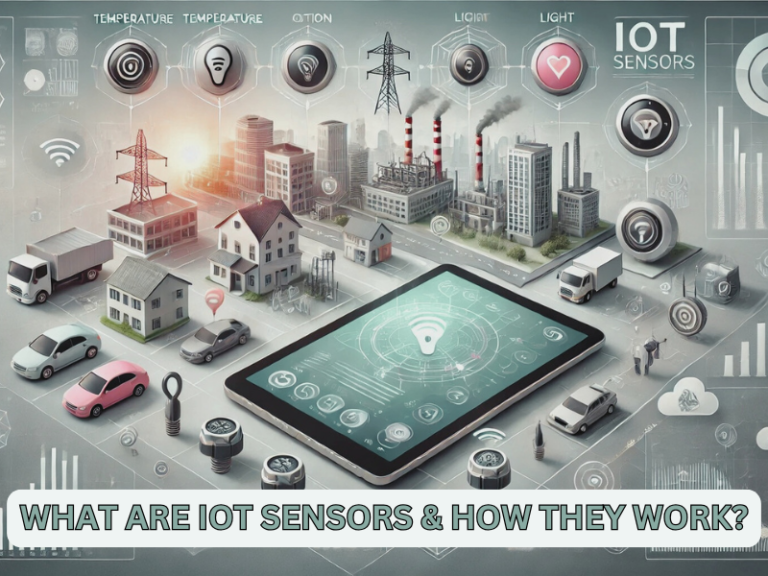What is Wireless Sensor Network in IoT
“Wireless Sensor Networks in IoT” may sound complex, but it’s quite simple.
Picture small sensors scattered around, gathering data like temperature and motion. They send this wirelessly to computers for analysis. It’s like having eyes and ears everywhere, helping us understand our world better.
Let’s explore what is Wireless Sensor Network (WSNs) in Iot , how wireless sensor networks work and why it matters in technology.
What is a Wireless Sensor Network?

Iot WSN is a sophisticated network comprising numerous autonomous sensors strategically dispersed across a designated area.
These sensors can perceive and gather data from their surroundings. This data can encompass a wide array of parameters including temperature, humidity, light intensity, motion, sound, and more.
After collecting it, the network wirelessly transmits this data to a central control system or data repository for analysis and utilization.
Wireless Sensor Networks in IoT (IoT WSN)
Wireless Sensor Networks (IoT WSNs) are the backbone of the Internet of Things (IoT), connecting devices and collecting data wirelessly.
Think of them as the eyes and ears of the IoT, gathering real-time information from the world around us.
WSNs use small sensors to measure things like temperature and motion, then send this data wirelessly for analysis.
For example, in farming, they help farmers know when to water crops by checking soil moisture levels. In factories, they predict when machines need fixing, cutting downtime.
What’s great about WSNs is how they link the physical and digital worlds. They give businesses instant insights, helping them make better decisions and work more efficiently.
As the IoT grows, IoT sensors in WSNs will stay vital. They’re not just gadgets; they’re paving the way for a smarter, more connected world.
Characteristics of Wireless Sensor Networks WSNs
Autonomy
WSN nodes operate autonomously, enabling them to function independently without the need for constant human intervention. This autonomy allows them to adapt to changing environmental conditions and continue functioning seamlessly.
Wireless Connectivity
One of the defining features of WSNs is their wireless connectivity. Sensors within the network communicate with each other and with the central system through wireless communication protocols such as Wi-Fi, Bluetooth, Zigbee, or LoRaWAN.
This wireless connectivity eliminates the need for extensive wiring infrastructure, making deployment and maintenance more convenient and cost-effective.

Low Power Consumption
To improve prolonged operation and minimize the need for frequent battery replacements, WSN nodes are designed to consume minimal power.
Low power consumption is achieved through techniques like duty cycling, power management strategies, and energy-efficient hardware design.
Self-Organization
WSNs possess the capability of self-organization, allowing them to organize and configure themselves dynamically based on network conditions and requirements.
This self-organization enables efficient routing of data packets, optimal resource allocation, and fault tolerance, ensuring reliable operation even in dynamic and challenging environments.
Adaptability
WSNs are highly adaptable and can be customized to suit specific application requirements.
WSNs, whether for environmental monitoring, industrial automation, healthcare, or agriculture, gather specific data and offer actionable insights to users.
Application Fields of IoT Wireless Sensor Networks
Environmental Monitoring
In environmental monitoring applications, WSNs are utilized to gather data on parameters such as air quality, temperature, humidity, and pollution levels.
These networks enable scientists and environmentalists to monitor ecosystems, track climate change, and assess the impact of human activities on the environment.
Healthcare
WSNs are very important in today’s healthcare because they allow doctors to watch patients from far away, help with telemedicine and make living easier for those who need assistance.
They keep track of important health measures and whether a patient takes their medicine properly while giving instant warnings if there is an urgent situation. This improves the care given to patients and makes health results better.
Agriculture
In farming, WSNs are used for keeping an eye on soil state, the wellbeing of crops and weather elements that have an impact on farm output.
These systems give knowledge about how much water is in the soil, warmth and what nutrients it contains, aiding growers to plan when to water plants better, cut down on how much water they use and increase harvest amounts.
Industrial Automation
WSNs are widely used in industrial automation and manufacturing processes to monitor equipment health, detect faults, and optimize production efficiency.
These networks enable predictive maintenance, real-time monitoring of production lines, and remote control of industrial machinery, resulting in cost savings and improved productivity.
Smart Cities
WSNs play a crucial role in the development of intelligent and eco-friendly cities through the supervision and control of different city infrastructure. If you can learn more, you can read smart cities and IoT.
They are able to keep an eye on how traffic is moving, make better use of energy, find environmental dangers, and enhance safety for everyone.
With live data and knowledge, WSNs support city designers in making smart choices to improve living standards for people in cities.
The Significance of Wireless Sensor Networks

Wireless Sensor Networks are important because they collect useful information from the real world, which helps people make better decisions, automate processes, and improve things in many different areas of work.
By providing real-time insights into environmental conditions, infrastructure health, and asset performance, WSNs empower organizations to improve efficiency, enhance safety, and drive innovation.
As the adoption of IoT continues to grow, the role of WSNs will become increasingly critical in shaping the future of connected technologies and driving sustainable development.
Conclusion of Wireless Sensor Networks in IoT
To sum up, “Wireless Sensor Networks in IoT” are essential in our world today. They gather data wirelessly and provide valuable insights into our surroundings. Also you can read about the Network Access Control.
Their importance lies in connecting the physical and digital worlds, helping us make better decisions. As technology advances, these networks will continue to be important in shaping a smarter future for everyone.
F.A.Q
What are Wireless Sensor Networks in IoT❓
Wireless Sensor Networks in IoT are networks of small sensors that collect data from the environment and transmit it wirelessly for analysis.
How do Wireless Sensor Networks work❓
Sensors in the network gather data such as temperature and motion, then send it wirelessly to computers or servers for processing.
What are the applications of Wireless Sensor Networks❓
They have various applications, including environmental monitoring, healthcare, agriculture, industrial automation, and smart cities.
What types of data can Wireless Sensor Networks collect❓
They can collect data on temperature, humidity, light intensity, motion, sound, air quality, and more.
How do Wireless Sensor Networks benefit agriculture❓
In agriculture, they help optimize irrigation schedules, monitor soil conditions, and maximize crop yields by providing real-time data on soil moisture and temperature.
What role do Wireless Sensor Networks play in industrial automation❓
In industrial settings, they monitor equipment health, predict maintenance needs, and optimize production processes, leading to increased efficiency and reduced downtime.
What are examples of IoT wireless sensor networks❓
IoT wireless sensor networks are employed in various applications such as smart agriculture, industrial automation, smart cities, healthcare, and environmental monitoring.





